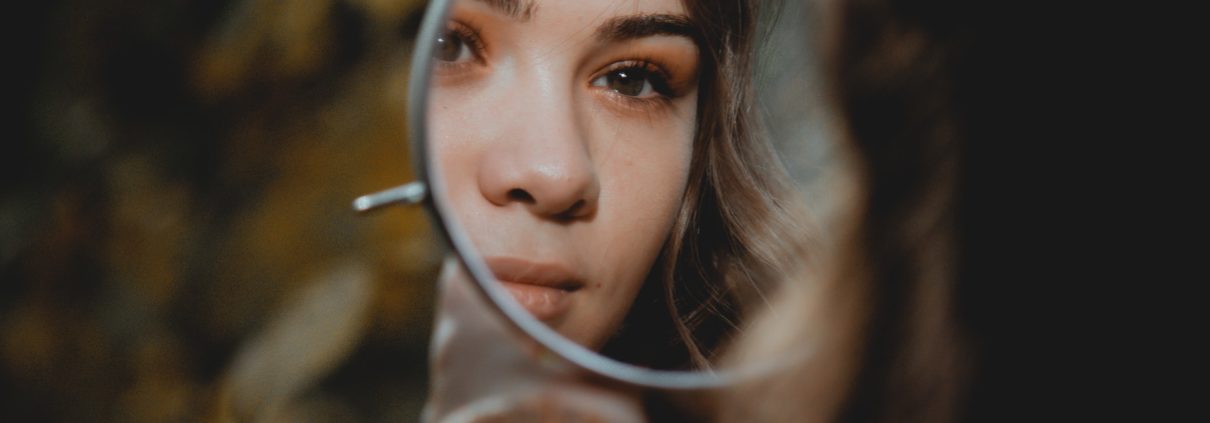How to Address Negative Body Image Issues in Women
Negative body image issues in women are common. They can hold you back from living a full, positive life. These issues are worth addressing with a counselor.
You may have thought, felt, or done these things if you have negative body image issues:
- Looked in the mirror and didn’t like something about yourself
- Took issues with your nose, lips, eyes, or any other body part
- Stepped on the bathroom scale with bated breath wondering what the numbers would say, and feeling like that reflected your worth
- Wished you had a slenderer body, a fuller chest or fuller lips, a smaller waist, longer legs, or any other change that is largely out of your control
- Wondered why you have all those thoughts about your image
- Convinced yourself that a nip here and a tuck there would fix your problems
- Compared yourself with others and wondered why you are doing so
- Thinking about the ideal body, nose, waist, or chest size and how it applies to you
- Wondering who determines and sets the body image standards against which you often measure yourself
 These thoughts can be exhausting and discouraging. That’s why it’s good to learn about negative body issues in women and how you can overcome them. For guidance, consider reaching out to Huntington Beach Christian Counseling to help you navigate these challenges with care and understanding.
These thoughts can be exhausting and discouraging. That’s why it’s good to learn about negative body issues in women and how you can overcome them. For guidance, consider reaching out to Huntington Beach Christian Counseling to help you navigate these challenges with care and understanding.
Understanding Body Image
Body image is defined as “the mental picture one forms of one’s body as a whole including its physical characteristics and one’s attitudes towards these characteristics.” Various studies and surveys show that more women than men are likely to be affected by body image issues.
There seems to be a social worth that attaches to women’s bodies. This is probably because different cultures have always had opinions on what it means to be an ideal woman physically. Because beauty is largely a social construct, there is a particular complexity that comes with body image. Not only is a woman limited to reflecting on how she feels about her own body but often, she also wonders how other people perceive her.
 In some cultures, women’s fuller bodies are seen as ideal and attractive. Yet in other cultures, the thinner and slender a woman is, the more attractive she is deemed to be. Despite this obvious difference in definitions and perceptions, the standards are more subjective rather than objective.
In some cultures, women’s fuller bodies are seen as ideal and attractive. Yet in other cultures, the thinner and slender a woman is, the more attractive she is deemed to be. Despite this obvious difference in definitions and perceptions, the standards are more subjective rather than objective.
These ideals are often perpetuated by the traditional media including television and magazines, the beauty and fashion industries, and social media. How a woman perceives herself is shaped by a myriad of sources, including what her society pushes and portrays as being the ideal body. Depending on each woman’s societal and media interactions, and her personal interpretation and understanding of such, she can either have a positive or negative body image.
Negative Body Image Issues
Negative body image can best be described as having an extremely unhappy and intensely dissatisfied view of one’s physical appearance. Due to the attention that is placed on women’s bodies and what it means to be beautiful and physically attractive in contemporary society, women start forming perceptions of their bodies at rather young ages. Often without realizing it, a woman internalizes those beauty standards to which she is most exposed.
A woman may start having internal conversations about whether or not she is attractive, worthy, and acceptable. These conversations will sometimes start to deepen and increase as her body undergoes natural changes and as she interacts more with the outside world.
For example, if she was teased about her looks or received negative feedback about her body parts or her weight, skin tone, or hair, she might start harshly criticizing herself and wishing her body or specific body parts were built or shaped in a certain way.
Likewise, if you spend most of your time immersed in traditional or social media you may find yourself comparing yourself with the “perfect” people that you see there and wondering why you are not like them. You may even start thinking of ways that you may attain such looks.
Signs and Symptoms
Although this list is not exhaustive, these are some of the common signs and symptoms of a negative body image:
- Low self-esteem stemming from comparing yourself with other people whom you view as having the ideal body or physical features
- Obsession with mirrors for purposes of scrutinizing oneself and finding more fault
- Spending too much time on social media for purposes of trying to keep up with beauty trends
- Harsh and judgmental comments about one’s own body
- Investing an extreme amount of time, effort, and money in trying to change your image
- Resorting to drastic dietary and exercise regimes or cosmetic surgery to attain the “ideal” body
 4 Ways to Improve Body Image
4 Ways to Improve Body Image
Here are four ideas to help you improve your body image issues on your own. But if you need more help, a Christian counselor can show you how to address these issues on a deeper level.
Be kind to yourself.
You can start by being kinder to yourself and avoiding some of your known triggers of negative body image. Stop comparing yourself to those perfectly curated people you see on television or social media. Limit the time you spend on social media. But while you are there, unfollow the pages of people who portray unrealistic beauty and body goals. When you feel tempted to compare yourself with others, say one kind thing you like about yourself instead.
Adopt a healthy lifestyle.
Adopt a healthy lifestyle that includes healthy eating and exercising, getting enough sleep, and seeking help from qualified healthcare practitioners and counselors. This will help you preserve mental, emotional, and physical health. Consider pursuing different hobbies which do not involve screentime. Try to surround yourself with people that keep your focus on other important life aspects instead of just physical looks and fashion trends.
Embrace your body.
Contrary to what popular culture will have you believe, there is more to a woman’s body than just being admired, Embrace your body and all its capabilities because, by its very nature, the human body is amazing regardless of its color, size, or shape.
 The Bible says in Psalm 139:14 NIV, “I will praise you; for I am fearfully and wonderfully made.” As a Christian, you should intentionally focus on that verse because your body is a testimony of God’s greatness.
The Bible says in Psalm 139:14 NIV, “I will praise you; for I am fearfully and wonderfully made.” As a Christian, you should intentionally focus on that verse because your body is a testimony of God’s greatness.
While it is true that society, media, and the beauty and fashion industries have a lot to say about women’s bodies, there are enough scientific facts that can be used to push back against some of the unrealistic ideals that are often forced on people’s faces. The following are examples of biological facts about women’s bodies that need to be normalized:
- Genetics play a significant role in how people look and there is no fighting them.
- Women’s bodies undergo different changes due to puberty, pregnancy, breastfeeding, menopause, and other hormonal changes.
- Sagging breasts are natural as they lose elasticity due to aging, multiple pregnancies, and hormonal changes.
- Some girls and women develop acne due to hormone changes during puberty and adulthood.
Repeat these truths to yourself when you need to embrace your body just the way it is.
Do not forget who you are in Christ.
It is important to reflect on Romans 12:2 NIV, “Do not conform to the pattern of this world but be transformed by the renewing of your mind. Then you will be able to test and approve what God’s will is—his good, pleasing and perfect will.”
Instead of chasing after the often-unrealistic man-made standards of beauty that constantly change, it is more fulfilling as a Christian to focus on God’s will for your life. You must never forget who you are in Christ and that you are called for a greater purpose.
The battle to develop a positive body image can be difficult. If you or anyone you know is struggling with body image issues, please do not hesitate to reach out to me or the other Christian counselors at Huntington Beach Christian Counseling are here to help. I would be honored to walk this journey with you.
References:https://dictionary.apa.org/body-images
“The Face in the Mirror”, Courtesy of Elisa Photography, Unsplash.com, CC0 License; “Watching the Sunset”, Courtesy of Sage Friedman, Unsplash.com, CC0 License; “Reaching”, Courtesy of Rowan Kyle, Unsplash.com, CC0 License; “Abandon”, Courtesy of Nathan McBride, Unsplash.com, CC0 License




